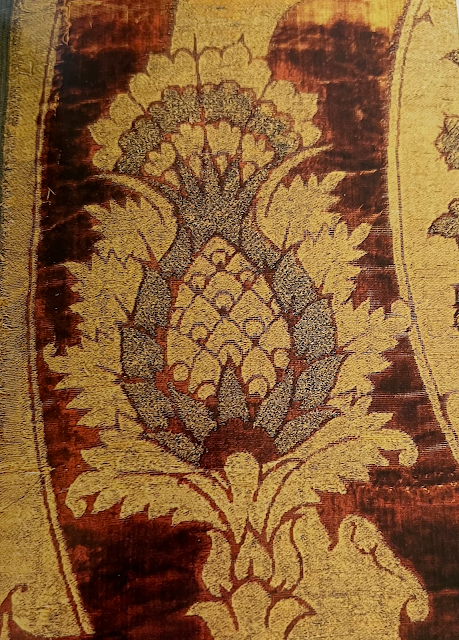Nicholas V reigned as pope between the years 1447-1455. To give a little historical context, it was during this same period that Constantinople fell to the Ottoman's -- a fact that Nicholas V always lamented, having attempted to come to its aid too late. Lamentable as this was, he was however a powerful and influential figure of the Renaissance in Rome, seeking to promote arts and culture within Rome and being the pope who first ordered designs to be made for a new St. Peter's Basilica. A great bibliophile, Nicholas V once commented that he experienced more joy in one day within his previous context as a librarian than in one year as pope. He was even said to have kept some of the most precious volumes of what would become the Vatican library near his bedside. All of this is simply to say that Nicholas V was a scholar and man of erudition.
Today, however, our focus is on a set of his vestments; vestments which were of Florentine manufacture being dated to circa 1450. The vestments are quite typical in many ways for the style of the period, with a beautiful gold and red velvet of familiar meandering pattern forming its base. We will begin with the cope which shows this particularly well, consisting of floral, pomegranate and pine motifs. The orphrey of the cope contains the images of various saints including St. Bernardine of Siena, St. Sylvester, St. Michael, St. Francis, St. George, St. Gregory, St Peter and St. Paul, while the hood/shield of the cope contains an image of the resurrected Christ and the apostle Thomas placing his fingers into Christ's pierced side.
The chasuble, dalmatic and tunicle of the set contain similar themes, but -- rather uniquely -- within the meandering, serpentine design are now found images of the biblical story of Christ and St. Peter walking on water in the Sea of Galilee. The orphrey contains a geometric, almost Celtic-like cross motif as well as floral motifs -- making this a rather unique design variant insofar as the orphrey is more decorative, while the imagery is found without.Here are a few closer details of the textile.
The set in question is housed within the Bargello Museum in Florence.






















